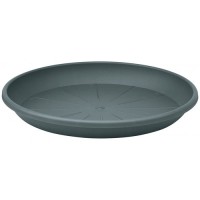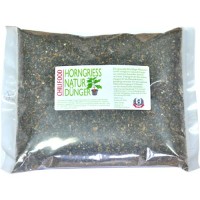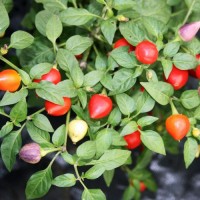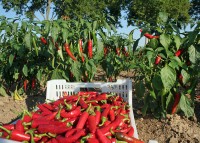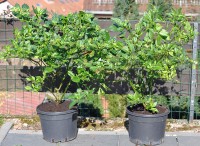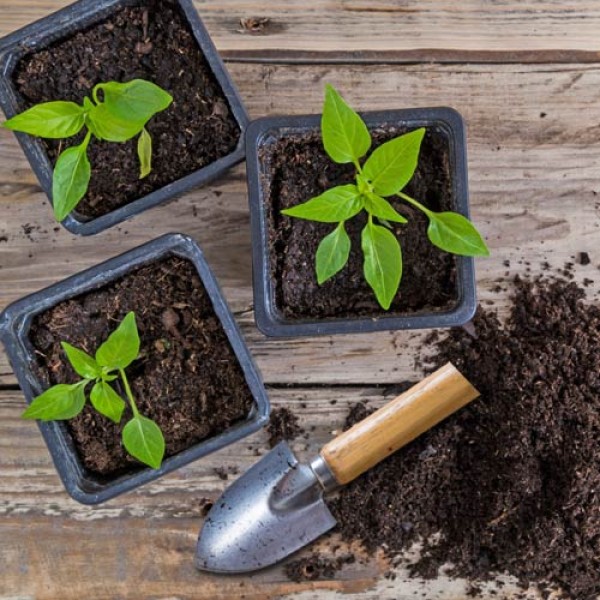
Pricking out & transplanting
Pricking out & transplanting - what do you need to consider?
What is pricking out?
If you grow vegetables, herbs or flowers in seed trays, you will soon have a large number of densely packed little plants. These need more light, air and soil for their roots so that they can continue to grow healthily. They therefore need to be separated - and this is exactly what gardeners call "pricking out", i.e. separating young plants.
Tips for pricking out
The seedlings are pricked out when they no longer have enough space and at the earliest when the first pair of true leaves appears after the cotyledons.
One or two days before pricking out, you can give the seedlings a small amount of fertiliser and water them well so that they absorb enough nutrients and water before transplanting. This is because transplanting is a shock for the delicate roots of the seedlings and it can take a few days for them in their new location for the roots to start providing again.
Pricking out requires a steady hand, as the small plants need to be handled very carefully. The fine, soft stems do not tolerate being squeezed. It is therefore better if the soil around the seedling is carefully loosened with a pricking-out stick and then the seedling is carefully lifted out either by the leaves or - even better - by the root ball. The pricking-out stick can then be used to make a hole in the soil in the new pot, where the seedling can be carefully inserted. Here, too, care must be taken not to damage the delicate and still very sensitive roots.
Tips for transplanting
Once the pre-grown plants have grown well in their new pot, the time will come when they need to be moved into a large pot or into the garden. In order for the plants to grow well in their new location, it is important to ensure that the new soil environment is well prepared for the root system. As nature does not intend for a plant to move, transplanting causes stress for the plant. The root system in particular is always damaged. To minimise the stress, you might want to consider the following:
- Avoid days that are too hot or too cold. As the plants need some time to get over the transplant shock, they should not be further stressed by temperatures that are too cold or too hot. The best time to transplant is late spring and early autumn. Frost should no longer/not yet occur. The warm summer months are usually too hot and too dry for successful transplanting.
- Water the root ball well before transplanting. If the root ball is too dry, many roots will be unnecessarily damaged when removing it from the pot. This can be remedied by watering well the day before, either by watering or by immersing the whole pot in water until no more air bubbles rise. In addition, potting compost usually contains a lot of peat, which - once dried out - draws water from the surrounding soil in the new location. This can cause the plant to dry out in the new location despite watering.
- Untangle the roots. If the plant has been in a pot for too long and has also been watered too little, circular roots and real root balls will form. The plant will then have problems connecting to the new soil. Before planting in the new hole, you should therefore untangle the roots and nick the tangle in some places with sharp secateurs or a cutter knife. The slight injuries will stimulate new root growth and the plant will grow better in its new location.
- Stuck roots: Some plants - especially bought ones - have already let their roots grow out of the holes in the soil in search of water and nutrients and these hold the root ball firmly anchored in the pot. The only thing that helps here is to cut open the pot and make a few courageous cuts around the edge of the root ball before planting in new soil to stimulate root growth.
- Create good starting conditions. Pre-grown potted plants usually have an excellent supply of water and fertiliser, whereas the conditions in the garden are often poorer. To give the plant the best possible start, make sure the planting hole is generously sized and the soil around it is well loosened. Mixing the soil with compost will make it easier for the plants to establish in their new location, as sufficient nutrients and water will now be available.
- Fill the planting hole well with soil and press down firmly.
- Water well after transplanting. As it will take some time for the roots to connect to the surrounding soil, it is necessary to keep the soil moist and water regularly for the first four weeks after transplanting.




